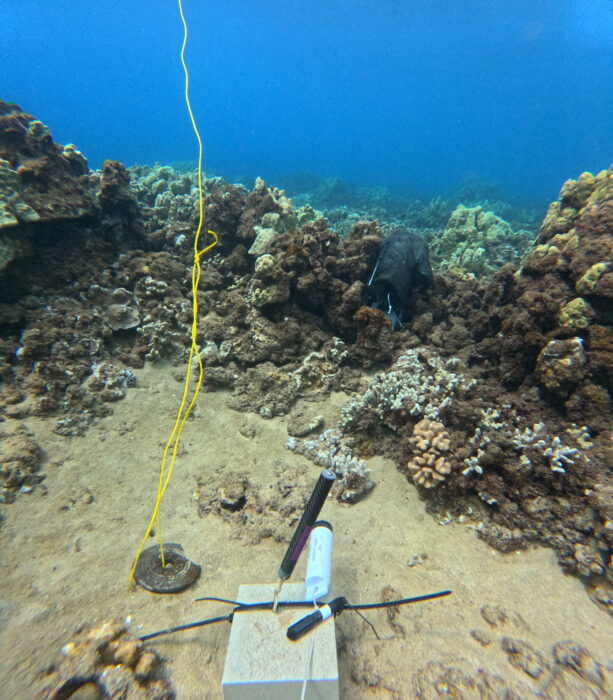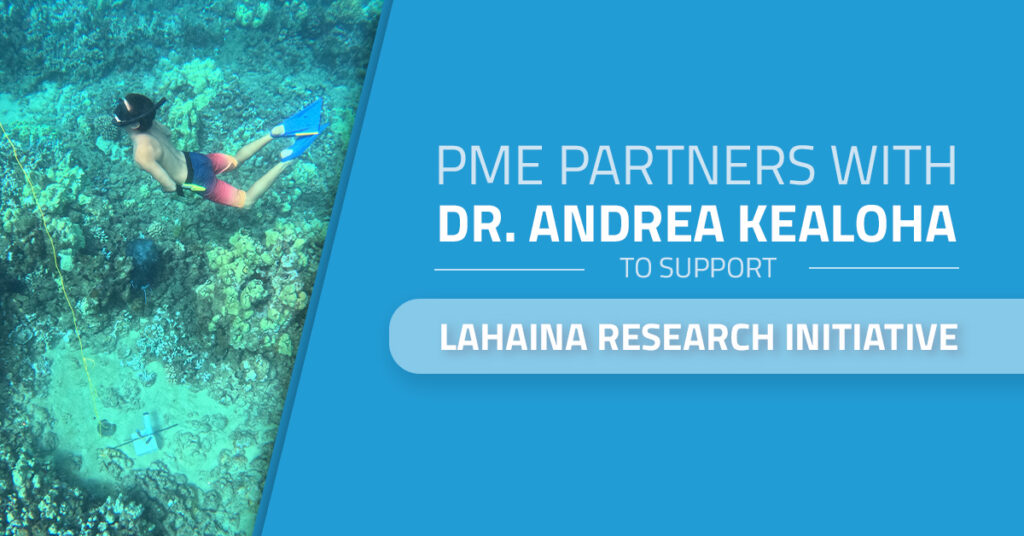
How to Reduce Fouling While Using PME Data Loggers
September 28, 2023
Freshwater Ecologist, Dr. Emily Arsenault Launches Research Lab while Joining PME’s New Researcher Program
May 21, 2024
The Lahaina Fires
By design, idioms are not meant to be taken literally; however, for Dr. Andrea Kealoha, there is nothing figurative about the Lahaina fires hitting close to home. Kealoha was raised in Pāʻia, Hawai’i, scarcely 20 miles east of Lahaina. Before August of 2023, Lahaina was a well-known, historic resort town situated on Maui’s western coast. Now, Lahaina is also known as the site of the deadliest wildfire recorded in modern U.S. history. Aided considerably by drought conditions and swift winds, the fire continued to flare and spread rapidly over the course of five days before it was extinguished. During this time, 2,170 acres were engulfed, and thousands of structures were reduced to ash. An estimated 100 lives were lost to the blaze, and months later, thousands of Lahaina residents remain displaced. As Lahaina residents start down the long road of rebuilding, many members of the community like Kealoha have expressed their concern for the impact the fire has had on Maui’s coasts.
Research Rooted in the Community
Kealoha’s lifelong love for her community and the surrounding ocean inspired her to take on a more active role in the preservation of both by advancing her education. Over the course of her academic career, Kealoha began focusing on ocean acidification and its impacts on coral systems. After earning her Ph.D. in Oceanography Kealoha returned to Maui to make a meaningful impact in her community. As a researcher and native Hawaiian, Kealoha stresses the importance of community-oriented collaboration when working in indigenous spaces. In her work, this looks like developing research methodologies or mitigation tactics with community feedback, answering questions from community members and valuing the knowledge shared with her in return. When Kealoha observed how the reduction of environmental stressors might increase a system’s resiliency to future stressors, it prompted her to partner with local authorities and residents to reduce the presence of coral stressors in the immediate vicinity.


Acidification & Lasting Effects
While the long-term effects of the fires will likely unfold over the course of years and decades, Kealoha identified nutrient pollution as a serious concern threatening the health of coastal corals. Because Lahaina was built right on the coast, organic debris from the fire like ash, burnt wood or dead vegetation need not travel far to reach ocean waters. As these materials sink to the bottom of coastal lagoons and nearby reefs, they will begin to release carbon dioxide (CO2) as they decompose; further contributing to acidification and decreasing oxygen levels in the surrounding water. Coral cannot survive in hypoxic waters and coral death can have far-reaching trophic ramifications. Kealoha also noted that seasonal Kona storms could exacerbate the situation, as they promote greater runoff and agitate otherwise calm waters.
PME is donating three miniDOT® Loggers equipped with antifouling measures to Kealoha and her colleagues to aid in current and future research efforts as they seek to better understand the ecological impact of the Lahaina Fires on Maui’s coasts. Not only will this research provide valuable insight to Maui residents, but Kealoha’s findings are groundbreaking in the field of oceanography given the rarity of urban fires occurring in such proximity to coral reef systems. We encourage readers to follow along as we feature more of Dr. Kealoha’s research as it progresses in the upcoming year.






